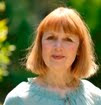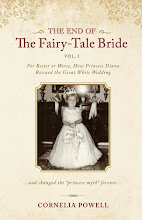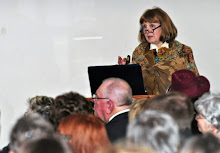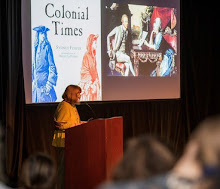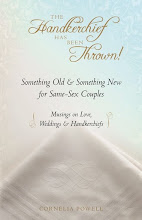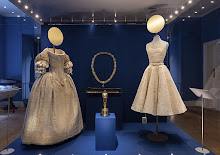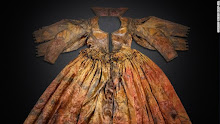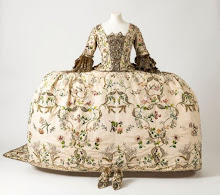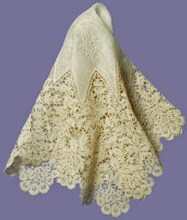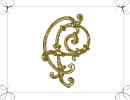My article, and book excerpt, "The New Royal Marriage," was recently published on Confluence Daily....and I'm sharing it below with some yummy images! Enjoy....
.....................................................
THE NEW ROYAL MARRIAGE
A few years after the grand
and ritual-rich wedding of Prince Charles and Lady Diana Spencer in 1981—a time
when the interplay of relationships, including the roles of men and women, were
changing—spiritual teacher Gary Zukav released his groundbreaking book, The Seat of the Soul. He wrote about the
end of the old marriage archetype (what he considered a “five-sensory” relationship
focusing on the body and personality) and the emergence of “spiritual
partnerships”—more consciously aware, “multisensory” ways of being in relationship.
Prince Charles was the last
heir to the British throne to marry for dynastic duty first (and who was raised in that hands-off, secluded,
in-training-for-the-crown severity); his sons were the first heirs to grow up with
access to the openness of modern culture and with fewer restraints of the
monarchy (thanks to insights of both parents.) This meant Prince William and Prince
Harry could participate in a less-structured environment—but still be aware of
their duty and place in the world—and be free to develop a loving, deep
friendship with the woman they would marry.
Looking back, perhaps it
was predestined for Charles and Diana’s spot-lit, world-stage
relationship—fraught with jealousy, deception, and lack of mutual support—demonstrate
an outdated model for marriage. Not finding the desired harmony in their own
relationship, yet as destiny would have it, they produced two sons (one a
would-be-king, one a prince of deep passion, both imbued with characteristics
of each parent) who, as young men, apparently did.
We saw this
deep connection during their weddings. I wrote the following about Prince William
and Kate Middleton’s 2011 wedding in The
End of the Fairy-Tale Bride, but it could also apply to the ceremony and
lives of Prince Harry and Meghan Markle a few years later:
Like the best of weddings, William and
Kate’s botanically inspired celebration had a sense of reconciliation and
healing within relationships, families, communities, even religions. This is
what I see their life mission will be about. And this nuptial day, therefore,
was a blessing, a redemption for both Diana and Charles. “It was Diana who
wired William with some innate radar to look for a soulmate who had a strong
family bond,” wrote journalist and author Tina Brown. “She never had it with
her own family, nor did Prince Charles,” but their first son has it and
embraced it and included all of his families—Spencers, Windsors and
Middletons—at the heart of his wedding day. And his Kate matched every royal
moment with equal poise and tenderness, inspiring Brown to share about the
bride’s choices: “Everything about her actions, to and for William, is about
creating a feeling of safe continuity: You
know me. I am here.”
Seven years later, as I watched
Prince Harry and Meghan Markle’s sun-lit springtime wedding, it seemed that we
all were witnessing not just a break in tradition, but something so
transformative it was as though being baptized in pure light and redemptive
love—being initiated into the most sacred depths of oneness. “It felt like
another level of everything,” Oprah
Winfrey, who had an up-close seat at the wedding ceremony, shared. “It felt
like more than a wedding. It felt like a shift in culture. I left more hopeful,”
she concluded.
Are these two royal couples
representatives of a “new marriage”—a “spiritual partnership,” as Zukav
imagined? Or perhaps it’s simply a return to the original purpose of marriage
where the cultivation of a deeply connected, equal partnership is a natural way
of relating for couples. William and Kate nor Harry and Meghan asked for their
marriage to be a template, however, royalty is one of our most reflective
archetypes so it’s just in the stars for them to take on a world stage life.
Not right or wrong or perfect; not forever or even “happily ever after,” and
certainly not a “traditional” marriage. (Is there really any such thing?)
Nonetheless, these two
relationships act as a mirror, so we can see ourselves just a bit clearer in
one of the most problematic areas of life for people. “It would be difficult to
find a human relationship that embodies a greater complexity than marriage—with
its blend of the civil, social, spiritual, and physical,” wrote cultural
mythologist Jane L. Mickelson. Our culture is filled
with the shadow side of marriage. “For every folk and fairy tale that
concludes, ‘and they lived happily ever after,’” Mickelson continued, “there is
another that speaks of the betrayal and bitterness, the hostility and disappointment
of marriage.” William and Harry knew this all too painfully well because of their
parents’ mismatched marriage as did their mother because of her parents’
damaged union. (I called these marriages representatives of the end of the
illusion—“the end of the fairy-tale bride.”)
In the aftermath of Charles and Diana’s shattered marriage, a very
public royal divorce, and—as though following some Jungian script—the death of
the much-loved princess, Dr. Caroline Myss, mystic and best-selling author,
considered the outdated “damsel and knight” fairy story could finally be laid
to rest. Echoing Gary Zukav’s vision for marriage, Myss wrote that we now begin
“to uncover a new archetype—one that reflects the emerging era of partnership.”
Was this to be a new mythology for marriage where couples serve
the highest good for each other? “This is how spiritual partnerships work,”
Zukav explained. “You begin to set aside the wants of your personality in order
to accommodate the needs of your partner’s spiritual growth, and in doing that,
you grow yourself.” In this relational reframing, women and men are not
substituting romance for intimacy; not settling for the illusion of love
instead of the real thing; not relying on the other for their own happiness and
fulfillment; nor are they denying the best of themselves so they can have some
false sense of security and comfort.
The Duke and Duchess of Cambridge and the Duke
and Duchess of Sussex may have royal titles, but it appears that their
marriages—their love and relationships and deep commitment to their partners—are
real and sincerely grounded, aligning with their modern, yet old soul
sensibilities. Both Kate and Meghan have “brought a kind of grace under
pressure to the royal family,” their husbands’ family, and I would suspect that
sense of being comfortable-in-their-own-skin reinforces a closeness with their
husbands.
It was Princess Diana’s tenacity and spirit that carved out a
way for William to be king and have a
marriage based on love and equality; and, in her demonstrative acts of
unconditional love, gave Harry, younger at her death and maybe more vulnerable,
the resilience to mend his broken heart and find a strong partner who matches
his devotion and compassion. And Prince Charles played his part as
he tenderly protected and guided his sons after Diana’s death; then, years
later, boldly challenged the old monarchic code and, with William and Harry’s
full-hearted support, married the woman he had long loved.
Perhaps we are drawn to these young
Windsor couples because they remind us of the true nature of what “happily ever
after” is to be—living a life you love, in service and in kindness to others.
And perhaps our attraction to them is how their lives show us, in the words of
beloved Sufi teacher Hazrat Inayat Khan, that, whether you are royal or just regular
folk, “to discover the heart is the greatest initiation.” ~
[Excerpts from Cornelia’s The End of the Fairy-Tale Bride, available at Amazon,
as well as excerpts from her book in progress, tentatively titled, A Memory of Beauty: The Spiritual Mission of
a Princess.]










